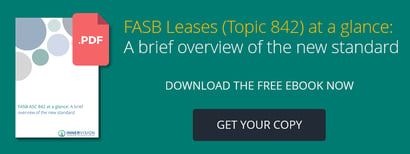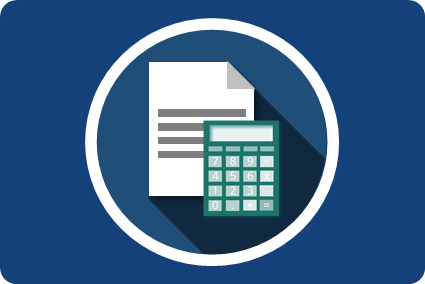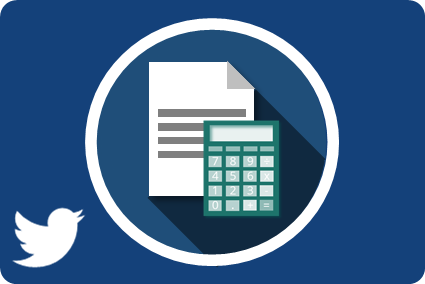Why Is Global Lease Accounting About to Change? IFRS 16 and FASB ASC 842: Leases
Updated 26th May 2021 | 6 min read Published 16th June 2016

Cast your mind back to 2006.
Italy beat France for the World Cup Title, Google bought Youtube.com for $1.6 billion and Daniel Craig played Bond for the first time in Casino Royale. One of the most important things to happen in 2006 though, was that the “Leases” project was added to the International Financial Reporting Standards’ agenda.
If you work with leases or have any contact with the leasing industry, you have probably heard about the biggest change to lease accounting in 30 years. With nearly a decade of discussions and a revised exposure draft, the “International Accounting Standards Board” and the “Financial Accounting Standards Board” published the finalised standards earlier this year: IFRS 16 for IFRS users and ASC 842 for US GAAP users.
As the face of lease accounting is soon to change around the world, we thought it may be useful to look back at why a change was called for in the first place. So, why is lease accounting changing?
What is the problem?
Current lease accounting (IAS 17 and FAS 13) does not require operating leases to be featured on an entity’s balance sheet and therefore many assets and resulting liabilities are not represented on the entity’s financial statements.
The IASB estimates that out of the US$3.3 trillion worth of lease commitments around the world, 85% do not currently appear in balance sheets.
This has caused problems where the information investors and financial analysts receive from balance sheets may not, as IASB Chairman Hans Hoogervorst puts it, “truly reflect economic reality”. This leads to a potential understatement of liabilities as a company may have thousands’ worth of assets under operating lease agreements that do not show up clearly in financial metrics.
In order to combat this, investors and analysts must make adjustments to balance sheets based on the information they do have, such as present value or by using a common multiple. Not only does this produce more of an educated guess of an entity’s economic standing rather than precise financial figures, it is also very difficult to accurately compare and contrast figures from separate entities. It is understandable therefore that investors would prefer a more transparent system that provides a more accurate reflection of companies’ liabilities and maintains consistency on a global platform.
There are numerous reasons as to why businesses are turning towards leasing rather than buying their assets outright. Leasing allows companies to attain the assets they need with less impact on capital expenditure and cash flows, under more convenient terms that suit their requirements. When it comes to lease vs. buy, companies choose leasing as they can avoid ownership expenses and responsibilities, yet still get the full benefits of the assets they require with less of a financial impact on monthly figures. The asset can even fund itself as businesses have access to practical equipment and machinery without the same economic impact that buying the asset would leave. However, in order to make sure all parties involved are able to harness the value of leasing, something needed to be done about the way we account for leases.
What is the solution?
Over the last decade, the IASB and the FASB have been collaborating in order to develop a new global standard that provides the clarity and comparability required for more accurate and relevant analysis of leases within accounting. One of the biggest changes of the new IFRS 16 and ASU 842 includes bringing operating leases on balance sheet and recording the associated liability. By providing this data, the boards hope to provide a global standard that allows for more efficient financial analysis.
This will no doubt alter the way businesses think about accounting for their leases - particularly operating lease accounting - and while many financial departments will not be too affected by the change, all businesses will need to understand what will be required from them and act accordingly.
"These new accounting requirements bring lease accounting into the 21st century, ending the guesswork involved when calculating company’s often-substantial lease obligations.
"The new Standard will provide much-needed transparency on companies’ lease assets and liabilities, meaning that off balance sheet lease financing is no longer lurking in the shadows. It will also improve comparability between companies that lease and those that borrow to buy."
Hans Hoogervorst, IASB Chairman
As with any global project, there will always be compromises and some entities will be left disappointed; even the boards have had difficulty trying to converge on every aspect of the new standard, such as the treatment of small ticket leases. This project has not been a straight forward one, but as the implementation deadlines draw ever closer, one thing businesses definitely can be sure of is that the way leases are accounted for will fundamentally change.
What should I do to prepare?
Start Now
International countries under IASB jurisdiction will need to employ the new standard IFRS 16 from 1st January 2019 and US entities using US GAAP will need to implement FASB’s version of the standard from the first financial year ending after December 15th 2018.
Companies will need to supply mandatory comparative P&L and balance sheet reports prior to implementation (2 years for US GAAP, 1 year for IFRS). This means businesses need to start their planning and gathering the necessary lease data now.
In order to reduce the potential impact and prepare appropriately for the implementation of the new standard, businesses will need to start reviewing their current leasing activity and determine what will be affected. The process of gathering data on leases may take some time, particularly if a company does not have a lease management system set up.
An estimated $2.8 trillion worth of lease commitments is coming onto balance sheet globally, which will impact financial metrics such as EBITDAR, outstanding liabilities, net income and operating cash flows. This is likely affect agreements with shareholders, banks and investors as well as employees. It is important that companies get an early and clear understanding of how the new lease accounting standards will impact them so they can prepare accordingly.
Utilise Technology
Many companies are turning towards lease management software as a way to ease this transition and to gather an accurate view of the impact of IFRS 16 and FASB ASC 842.
Innervision specialises in lease portfolio management, using our dedicated leasing software, LOIS, to help some of the biggest companies in the world prepare their leases for the impending accounting standards.
LOIS, allows companies to manage the entire end-to-end process of a lease as well as the new lease accounting project. LOIS allows users to run an instant report that details how their lease portfolio is accounted for under current IAS 17 or FAS 13 and how it will work under the new accounting standards, providing a clear view of the differences in the financial metrics. A function unique to LOIS, this provides LOIS users with a clear and detailed look at how IFRS 16 will impact their businesses important financial figures within seconds.
This information will give a clearer indication of the impact the transition will have on financial statements, allowing you to plan the best response and alter your current leasing activities as required.
Plus, with the guidance and services from experienced leasing experts you are in safe hands and can trust them to improve everything from your new lease arrangement through to optimising the end of lease proposals.
The road to a transparent, efficient and mutually beneficial global standard has been a long and winding one and there have not been a shortage of bumps along the way. We are finally on the home stretch so now is the time to prepare your company so you does not fall at the final hurdle.
For more information on how Innervision is helping some of the world’s leading brands prepare for the changes to lease accounting, be sure to download our e-papers or book a demo of our specialist lease accounting software with one of our leasing experts.
Share this Article:





